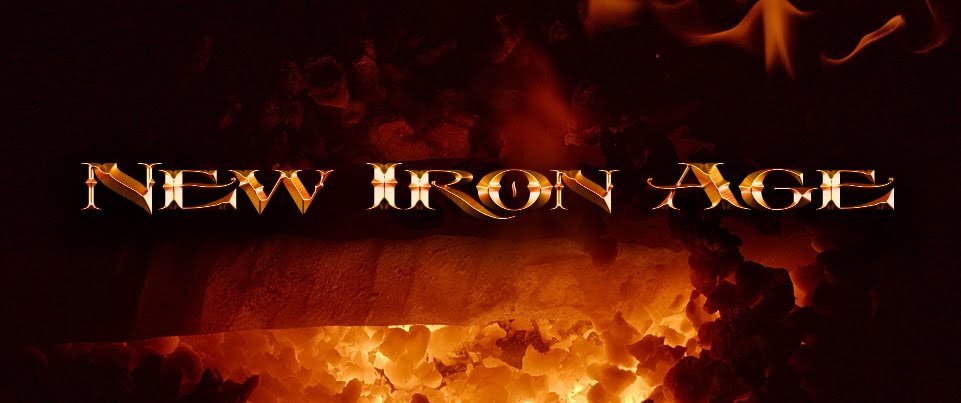The
13th Warrior is a movie that casts a
shadow far out of proportion to its initial success. Released in
1999 after a troubled and expensive production, the film was one of
the biggest flops that year and still remains one of the worst
financial failures in movie history. However, it found a home on
video, and an audience who still enjoy and talk about it to this day.
Not a lot of movies remain relevant in any way after two decades,
and even fewer that cratered so badly when they first emerged.
Originally
to be called Eaters of the Dead, it was, of course, based on
Micheal Crichton’s 1976 novel that mashed up the 10th-century
Ibn Fadlan manuscript with the myth of Beowulf to produce an
interesting take on the legend and a rather rousing adventure story.
There had been plans to film it as early as 1979, but it would be 20
years before the film reached theaters. There were even teaser
trailers released still bearing the Eaters of the Dead title,
though test screenings apparently put a stop to that.
The
film was directed by John McTiernan, who was then riding pretty high
on acclaim as an action director after starting his career with
mega-hits like Predator, Die Hard, and The Hunt for
Red October. On this one he went famously over-budget, spending
what is variously reported as $85 million all the way up to $160
million to shoot it. The test screenings went badly, and Crichton
was brought in to direct reshoots and the whole film was recut and
retitled. Considering the financial disaster that ensued, we will
probably never see a director’s cut, which is a shame.
As a
movie, The 13th Warrior is uneven.
The storyline is pretty much straight from the book, depicting Ibn
Fadlan on his long journey into Scandinavia in company with a band of
Volga Rus warriors on a quest to help Hrothgar, king of the Danes,
against an ancient enemy. The book and movie both posit the story of
Beowulf as a mythologized struggle against a more primitive
race of humanity, still existing as a remnant population. In this
story, Grendel is not a monster, but the Wendol – a tribe of maybe
Neanderthals living a Neolithic existence, and the dragon of the
story is instead their force of torch-bearing cavalry.
The
historicity of the movie is pretty bad. The armor and weapons are a
slurry of anachronistic details when they are not just bad-looking,
with the swords being thick and clunky, without any of the beauty of
Viking-era sword designs. One character wears a Roman gladiator’s
helmet, which would have been possible, but another wears
16th-century Spanish gear, and Buliwyf’s Viking plate
armor is a total fantastical invention – even if it looks totally
awesome.
The
movie trades heavily on action, but the fight choreography is not
really very good. Most of the excitement of the battle scenes is
generated by good lighting, excellent editing, and solid direction.
All this serves to make the fight scenes pop more than the rather
crude choreography would otherwise indicate. The cinematography is
excellent, really evoking this misty, ancient world, and while Jerry
Goldsmith’s score is a replacement for the rejected original by
Graeme Revell, it is an almost iconic workout in operatic mood, with
a heavy, memorable theme that adds a lot of drama.
What
really holds the film together is the cast. Banderas is perfect as
the intelligent, somewhat timid and fussy Ibn Fadlan, and the
depiction of his Muslim beliefs and habits is respectful, avoids
stereotypes, and does not make him the butt of jokes. The rest of
the cast is not as well-known, with Tony Curran in an early role,
Diane Venora doing good work as Hrothgar’s queen, and Omar Sharif
lending his gravitas in the first part of the movie.
Norwegian
actor Denis Storhoi plays the fun-loving, devil-may-care Herger, who
becomes Ibn Fadlan’s best friend, and he lights up the screen
whenever he’s on it with his good humor and fearless bravado. He
has an effortless charisma that the movie is smart enough to make
good use of. The actors playing the warriors all have an easy
camaraderie and really seem as if they have known one another for
years, working and moving like an experienced team.
It
is Czech-born actor Vladimir Kulich, however, who really sticks in
the mind. As the towering, magnetic Prince Buliwyf he is barbaric,
iconic, and radiates the kind of charisma that makes you understand
why men would follow and die for him. It is a terrible, terrible
shame he was never cast as Conan, because with the right hair and the
right look, the looming, 6’5” Kulich could have been a Conan for
the ages.
Despite
its flaws, The 13th Warrior remains a
favorite among Viking and fantasy fans. It is a very Howardian
movie, with its focus on machismo, the Dark Ages, and battles against
prehuman beings that dwell underground, it has shades of stories like
“Worms of the Earth”, and considering how big a fan of pulp
literature Crichton was, that is surely not an accident. Not a lot
of movies manage to survive long in the constantly shifting mass
consciousness of our media-saturated age, but The 13th
Warrior still holds its own.























